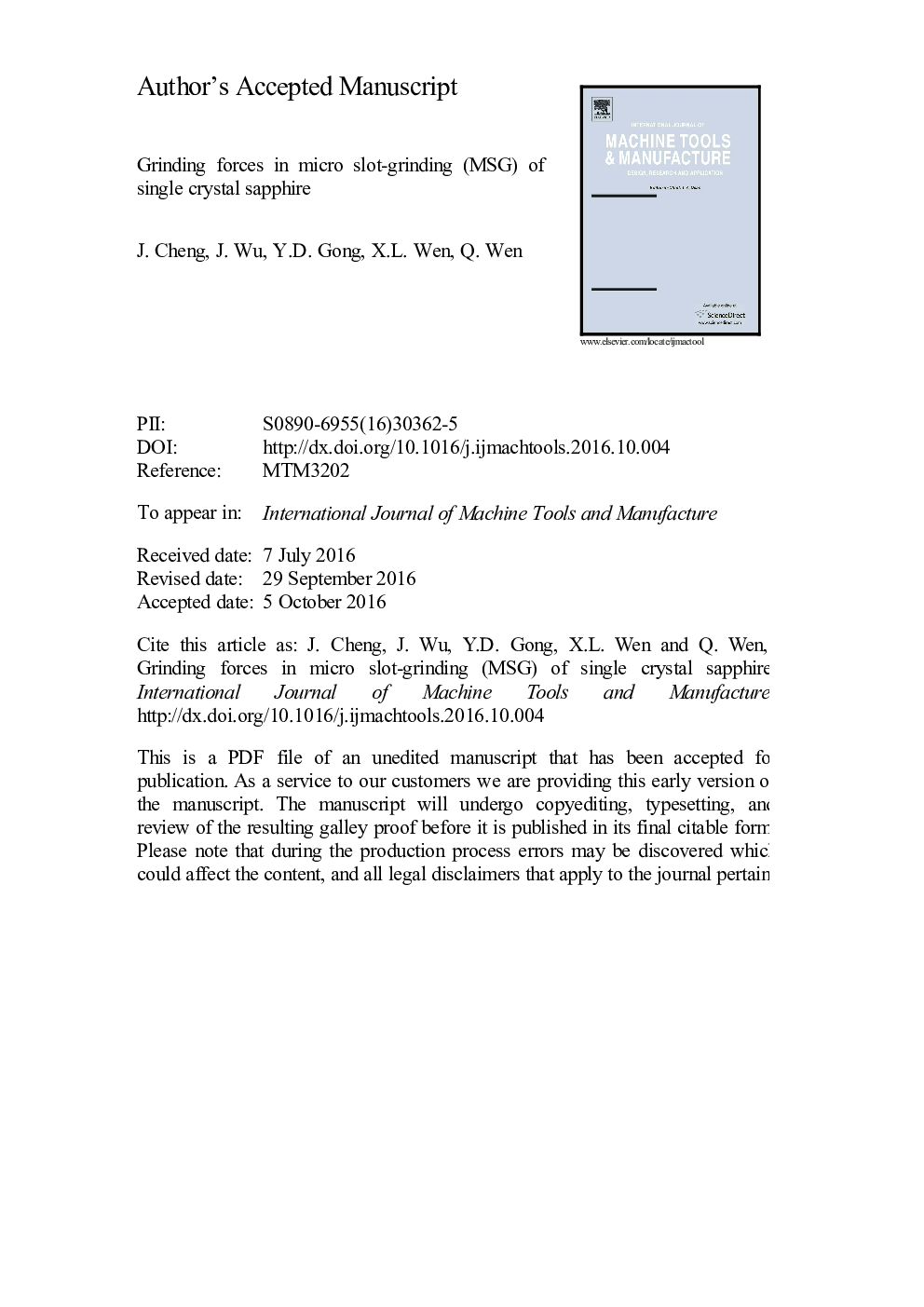| Article ID | Journal | Published Year | Pages | File Type |
|---|---|---|---|---|
| 5015783 | International Journal of Machine Tools and Manufacture | 2017 | 44 Pages |
Abstract
Micro-slot grinding (MSG) is an important processing method for the micro-machining of hard brittle crystalline materials. Modelling the MSG of crystal material is necessary to understand its precision micro-machining aspects. In this paper, a predictive model is developed for the grinding force in MSG in three different orientations of single crystal sapphire: the C-orientation {0001}, A-orientation {112¯0} and R-orientation {11¯02} are established. The crystalline effects of the density of Al+, âAl+ and DAl+; the density of Oâ hollows DOâ; the number of crystal layers ζ; and the weak shape of different orientations are incorporated. Three group experiments (144 paths) are performed, and the differences in the grinding forces from three orientations, {0001}, {112¯0} and {11¯02}, are discussed. The grinding forces of the A-orientation {112¯0} are higher than of the other two orientations {0001} and {1102¯}, and the number of crystal layers ζ is shown to play a vital role in determining the grinding force required for MSG of sapphire. The force ratio rF (Fx/Fy) is between 0.6 to 0.8, and the rF of {1102¯} is more stable than for the {112¯0} and {0001} orientations. A comparison with existing models and experimental data shows that the model used in this study fits the experimental data better, especially at lower feeding rates.
Keywords
Related Topics
Physical Sciences and Engineering
Engineering
Industrial and Manufacturing Engineering
Authors
J. Cheng, J. Wu, Y.D. Gong, X.L. Wen, Q. Wen,
